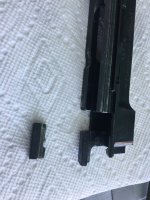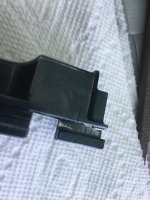Greetings,
Yesterday at the range my Lahti/Husqvarna m40 broke and has a crack in the receiver...
One piece actually broke off and the crack had developed in the rear portion of the receiver...
I need to find a new receiver...Anyone got any leads?
thanks
Hakan Langebro
San Diego
Yesterday at the range my Lahti/Husqvarna m40 broke and has a crack in the receiver...
One piece actually broke off and the crack had developed in the rear portion of the receiver...
I need to find a new receiver...Anyone got any leads?
thanks
Hakan Langebro
San Diego


